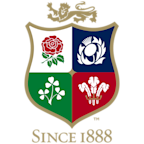Heading to Christchurch, there was a renewed optimism for an under-strength side, but Paul Murray’s mid-match shoulder injury left them depleted still, finishing the game with 14 men – replacements were frowned upon by the Lions at this point.
New Zealand levelled the series through a 13-10 victory far more comfortable than the scoreline suggested, in spite of more individual lung-busting brilliance from Jones to give Carl Aarvold a score.
On to Auckland
Two months and 19 games of the Tour had already elapsed by the time the Third Test came around in Auckland, but not before a bit of fun and festivities were had in the prolonged stay.
Fly-half Tommy Knowles was a major beneficiary, purchasing a set of left-handed golf clubs in Dunedin before making a hole in one on the very first hole to cheers all around the course.
Level at 1-1 heading into the third Test, the series was more than in the balance when the Lions headed to Auckland, although defeat to the provincial side the week previous was hardly the ideal preparation.
A 15-10 defeat was to follow, despite Jones once again being in on the act, this time with a try of his own following clever approach work by Harry Bowcott, who impressed throughout the entirety of the Tour.
However, being 15-5 up in the encounter, New Zealand were never really threatened with defeat, a fact which the touring Lions believed could have been reversed had they been a full-strength outfit.
Destination Australia
But the All Blacks were going from strength to strength, heading to Wellington for the fourth encounter and running rampant, scoring four tries in the second half alone, six altogether in the match to run home 22-8 victors. A match scoreline and 3-1 series defeat was perhaps undeserving of the visitors’ displays.
One highlight for the home side was however, Tony Novis' fine score.
The Tour was not finished there, however, with one provincial game planned for before the Australia Test, while six were also scheduled afterwards, prior to the side making the six-week trip home once again.
While the anticipation may not have hit the dizzy heights of the 1904 Tour, the Test in Sydney at the end of August was not merely an after-thought, with more than 30,000 people hitting the Sydney Cricket Ground.
But a win was not to come for the Lions, with Tom Lawton masterminding a 6-5 victory despite Tony Novis’ try.
Prentice converted to leave the tourists in with a chance, and in the dying seconds Jones was tackled just a meter short of the try line by Cyril Towers, another case of close but not quite enough as four Test defeats followed the solitary victory.
Despite the results, by all accounts it was a promising Tour both on and off the park, with plenty of social activities to allow the Lions to properly, and responsibly, celebrate their new name.
The heaviest defeat of the trip was still to come though, a 28-3 overturning to New South Wales, but September and the Australia leg finished on a positive note. A 71-3 win against South Australia was followed by a 45-0 trouncing of Ceylon in Colombo, Sri Lanka, a full five months after the Tour began way back in May.
But there was more to take from the Tour than just results. A hugely under-strength Lions had pushed the mercurial New Zealanders close, captured the imagination and the acclaim of the public both there and in Australia, all while playing under a new Three Lions emblem.





